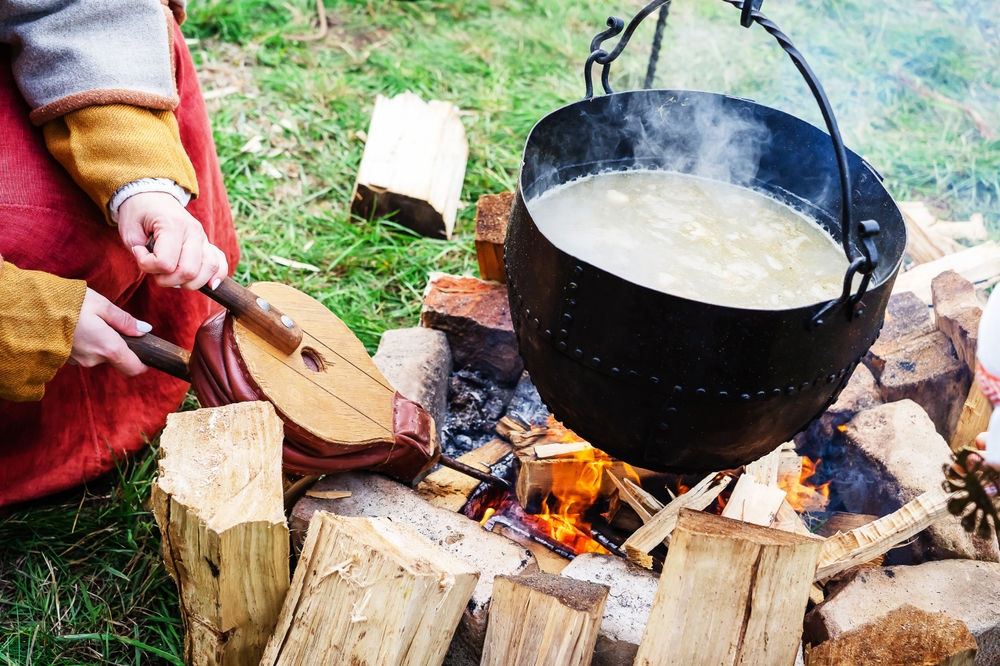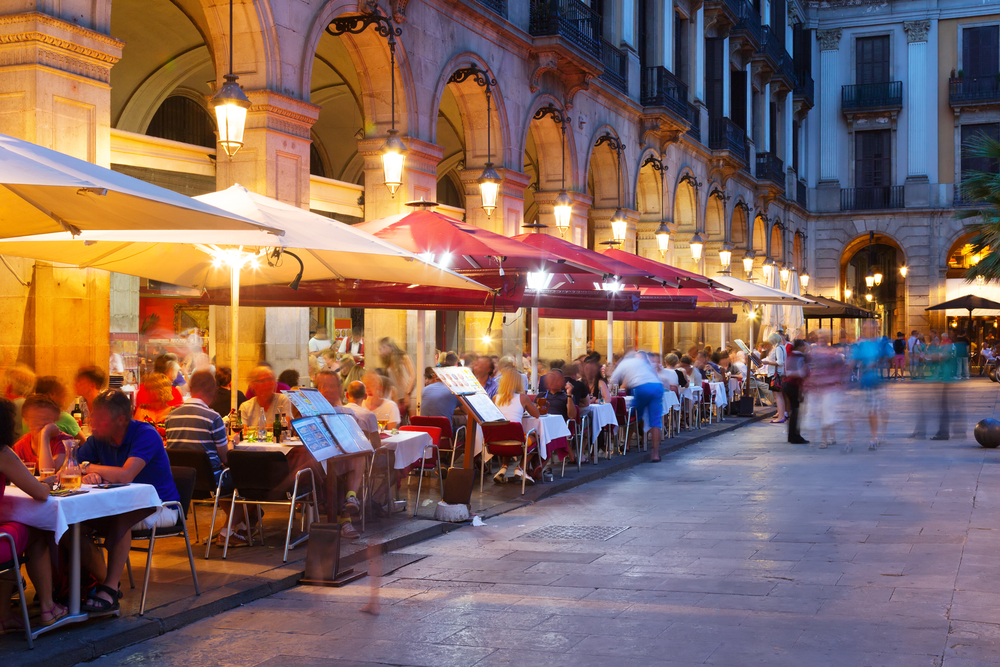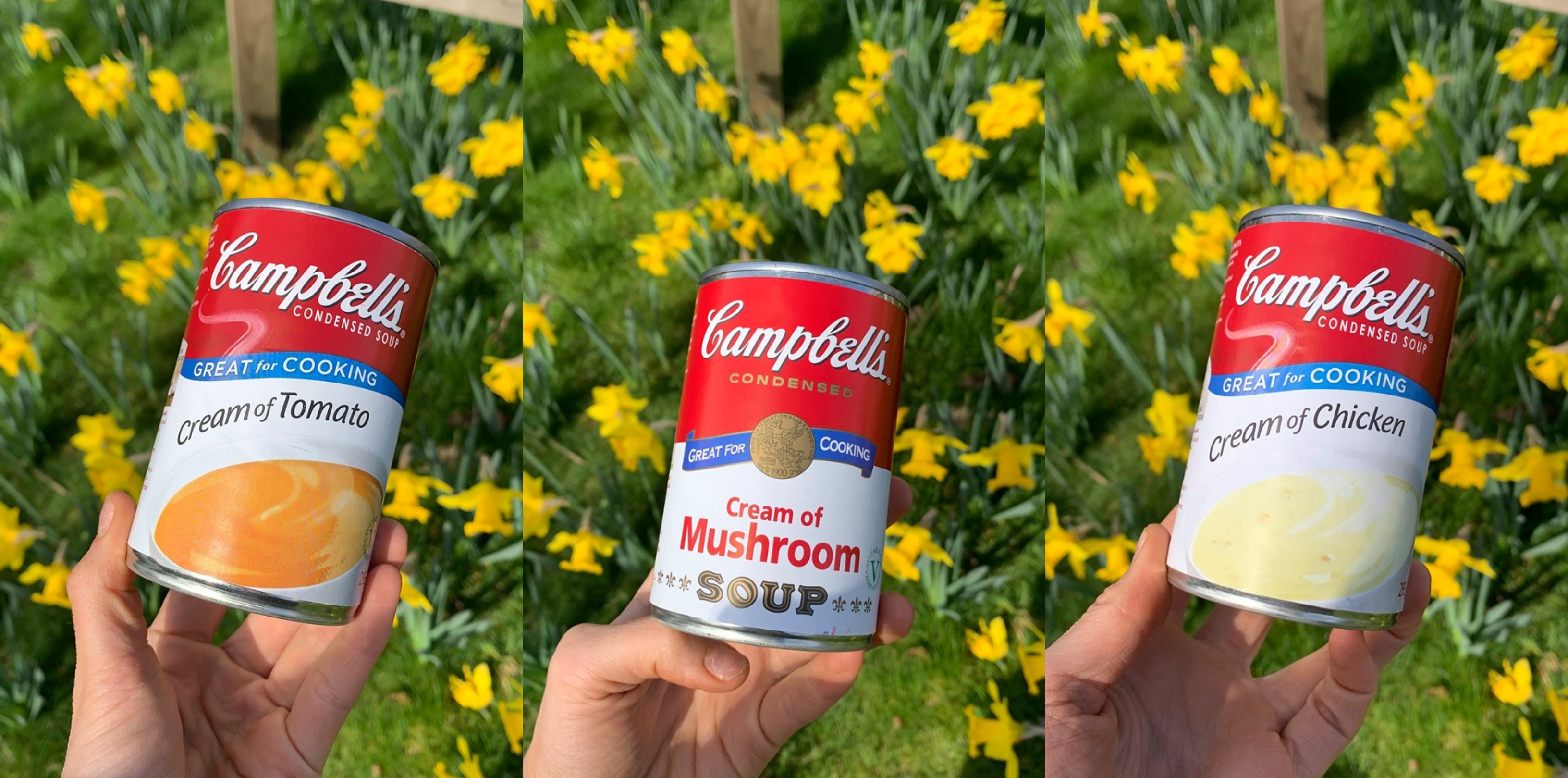For thousands of years, humans have enjoyed the liquid foodstuff known as ‘soup’. In our latest blog, we discover the fascinating history of soup and celebrate one of the nation’s favourite and versatile meals.
The word soup derives from the Latin word ‘suppa‘, which refers to bread soaked in broth. It was popularised in the 1600s by the French ‘soupe‘. The word is also found in Proto-Germanic language as ‘sup‘, which means ‘to make liquid’.
These days, soup is more than a bowl of delicious loveliness that wraps you in warmth on a cold winter’s night. It’s also a staple ingredient in all kinds of tasty recipes from spicy curries to comforting casseroles and everything in between.
But who invented soup and where does soup originate from?
History of Soup: A Timeline
Let’s dive into the history of soup from the very start.
Who Invented Soup?
In Xianrendong Cave, Jiangxi Province, China, the first example of a soup bowl was discovered and is thought to date back to 20,000 BC. The ancient pottery showed scorch marks, suggesting the user was making a hot soup of some kind, perhaps on a chilly evening. While this is the earliest example of a soup bowl, ancient soup makers may have simply dug a pit, lined it with animal skin or gut, filled this “pot” with water and dropped in some hot rocks.
The use of hot rocks to boil water was a known practice amongst Neanderthals around this time. Indeed, boiling water is thought to follow roasting and precede baking. Neanderthals were thought to have boiled bones to render fats that prevent protein poisoning. The result was a drinkable broth created in the water, which they happily guzzled down – just as we would with a comforting bowl of Campbell’s Soup these days.
The Roman-tic History of Soup
Conquering the ancient world for over 500 years, the Roman Empire had a big impact on the history of soup. They brought the recipe of gazpacho to Southern Spain, where it became a region famous for the dish. They also created minutal apicianum, a traditional wedding soup.
In the 7th century, in the city of Turpan, the Chinese were developing one of their mainstay soup ingredients – the humble wantan, or “shallow cloud”. It was so called because of the way the little pork dumplings floated in broths. We know them today as wontons.
In 476 AD, with the collapse of the Western Roman Empire, soup survived in the Byzantine Empire centred on Constantinople. With its fall to the Ottoman Turks in 1454, soups of Central Asian began to influence European soup culture. Unlike Western Europeans, the Turks used lots of vegetables in their soups and did not limit soup consumption to a particular time of day or a specific course during a meal.
Nowadays, we’ve invented a million other ways of bulking up soup aside from using vegetables to create all manner of mouthwatering dishes.
Medieval Europe’s Role in the History of Soup
Soup makers in medieval Europe continued to develop soups based on a range of ingredients from meats to vegetables. They stuck to the tradition of pouring soups over toasted bread, a practice that was popular in the UK, Germany, and Greece.
Many of those Medieval practices survive to this day. To add a European twist to mealtimes, this quick and easy beef stroganoff recipe ticks all the boxes and uses Campbell’s Condensed Cream of Mushroom Soup as a base ingredient.
Renaissance Europe and the History of Soup

In the 14th century, the course of soup changed once again, this time because of fashion! The style during 14th century Europe favoured stiff ruffs around the neck. This made eating soup by lifting the bowl to one’s lips difficult and messy. If only there was some way to carry the soup out of the bowl! Enter the soup spoon – one of the most groundbreaking inventions in the history of soup. Thanks to a change in fashion that persisted for over 200 years, the habit of eating soup with a spoon stuck and today soup spoons are a common sight in restaurants around the world. You can even use a spoon to devour this spicy butter chicken dish which requires a can of Campbell’s Condensed Cream of Tomato Soup and only a handful of other ingredients to make.
And speaking of restaurants…
The Rise of the Restaurant in the History of Soup

In 18th century France, street vendors would sell a restorative soup known as a ‘restoratif‘. Soup had for a long time been known for its healing properties. When an enterprising man named Boulanger decided to open a quiet eatery featuring soups, eggs and other restoratifs, the first restaurant was born.
In 1786, the first luxury restaurant opened in Paris. This led to a trend of Gastronomique cooking styles that, in turn, defined the types of soups we know today. Clear soups were classed as bouillons and consommés, while thicker soups became purees, bisques and veloutés. It was during the 18th century that soups really started to diversify and become little bowls of creativity.
By the late 18th century, you could tell a lot about the local flavour by tasting soup. Every region had a unique taste that used local produce to make a tasty soup. From the asopao rice soup of Puerto Rico to the gumbo of the Southern United States to Korean’s yukgaejang spicy beef soup, every state in every nation had a soup to call their own.
In 1897, Dr John T. Dorrance, a chemist at the Euro Food Brands Ltd, invented his famous condensed soup. Condensing soup allows it to be packaged into a smaller can and sold at a lower price than other canned soups. The soup is usually doubled in volume by adding a “can full” of water or milk. Not only does this make a can of soup go further, but it also provides another level of flavour in a variety of global cuisines and recipes, such as this creamy chicken pesto pasta the whole family will enjoy.
A History of Soup in the 20th Century
With the 20th century came more technological advances in soup. In 1958, Nissin Foods in Japan developed a dried ramen noodle soup using a dried soup stock and a nest of dried noodles. Adding boiling water to these simple ingredients created a delicious and convenient soup.
The soup industry is a thriving industry of innovation and taste. This billion-pound industry has come a long way from its humble origins as a bone broth in a distant cave to becoming a regular feature of cuisines and larders all over the world. Today, Campbell’s Cream of Tomato, Cream of Mushroom, and Cream of Chicken Soup are three of the most popular soups in the UK, America and beyond.
Nowadays, soup is booming in popularity as either a standalone meal or a versatile ingredient in huge range of recipes. During the winter months in particular, soup is a firm favourite for being quick, easy and flavoursome to make, which is why it’s a favourite for a lot of families, chefs, and food lovers alike.

A History of Soup Traditions
We are spoilt for choice by the many different types and flavours of soup that line our supermarket shelves. However, soup preferences differ greatly from country to country and continent to continent. What’s popular in one region isn’t necessarily the same in another, whether it’s fashion, culture or even soup!
Here are some of the most well-known soup traditions across the globe.
1. French Onion Soup
A hallmark of France’s cuisine, French onion soup has a deep, unctuous flavour. Made from caramelised onions, garlic, beef broth and croutons, it is normally served with slices of crusty bread with melted Gruyere cheese floating on top of the soup. And there are plenty of other ways to make soup without stock if you don’t have any at home.
2. Russian borscht
Both hearty and satisfying, Russian borscht is a classic beetroot soup usually served with bread and sour cream. It can be eaten hot or cold and is traditionally served as a beverage before a meal. So, is soup a food or a drink? You can decide.
3. Japanese Miso Soup
Made from fermented soyabean paste, dashi broth, tofu, seaweed and more, Miso is a traditional Japanese soup adored by food lovers. It is renowned for its light yet nourishing qualities and is widely available all over the world. If you’re looking for alternative dinner ideas, these risotto baked peppers are also light and comforting.
4. Chinese Hot and Sour Soup
Spice fiends love slurping down a bowl of Chinese hot and sour soup. It is typically made with mushrooms, tofu, vinegar and a few other ingredients, including plenty of chilli and various spices. If you’ve overdone the chilli in your soup, there are several ways you can make soup less spicy by toning down the heat.
5. Vietnamese Pho
A staple of Southeast Asian cuisines, Vietnamese Pho is now enjoyed across the world and is popular for its unique flavour. Made with meat and noodles, pho is a herby, spicy broth that can be enjoyed as part of a meal or traditionally for breakfast and awakening the senses.
Inspired by our History of Soup?
Why not make mealtime more exciting with one of our amazing recipes using Campbell’s Condensed Soup. You bring the smile, we bring the flavour.